What you see here is a brand new Vanquish. It looks a little like that first one from 2001, but only because all recent Aston Martins look more similar to each other than their designers perhaps like to think. This new one replaces the DBS, which was itself a DB9 on steroids and sort of replaced the first Vanquish, and possibly also replaces the excellent Virage (not the 1990s version), which was itself really a DB9 made slightly better in every way. There will soon be a new DB9 too, which should really be called DB10 but won't be because the DB9 name still makes people think of nice Aston Martins.
That's clear, then. Now, please expunge from your mind the recent Aston Martin One-77 – you know, the million-pound supercar – and the V8 Vantage Zagato that's designed in the UK and made here too (although Zagato did make a few suggestions). Next, please tune in with me to the video shown to the assembled press corps at Aston Martin's Works Service centre, across the road in Newport Pagnell, Buckinghamshire from the now-abandoned old factory whose final product was the first Vanquish.
Aston Martin CEO Dr Ulrich Bez is on the screen, almost as if he has departed this earth and just the recording remains. “The new Vanquish is the best car we have ever made,” the Doctor is saying. He goes on to explain why – the carbonfibre body panels, the extra power and torque from the new V12 engine thanks to the variable valve timing, the lower emissions – then leaves us wondering if the One-77 was somehow less good. Not that it matters, with all 77 examples sold. Besides which, no journalist has ever got to drive it so we don't know if it's better than the Vanquish or not. What cannot be denied is that the new Vanquish seems rather better value at a perky £189,995.
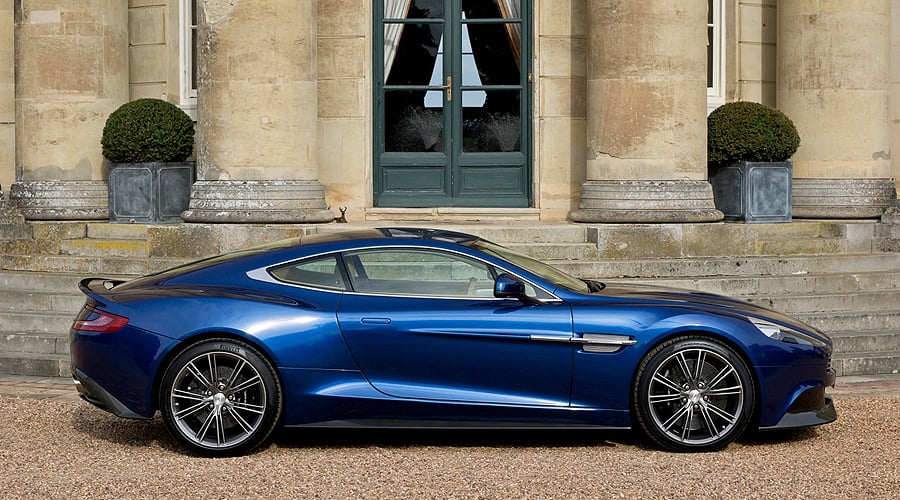
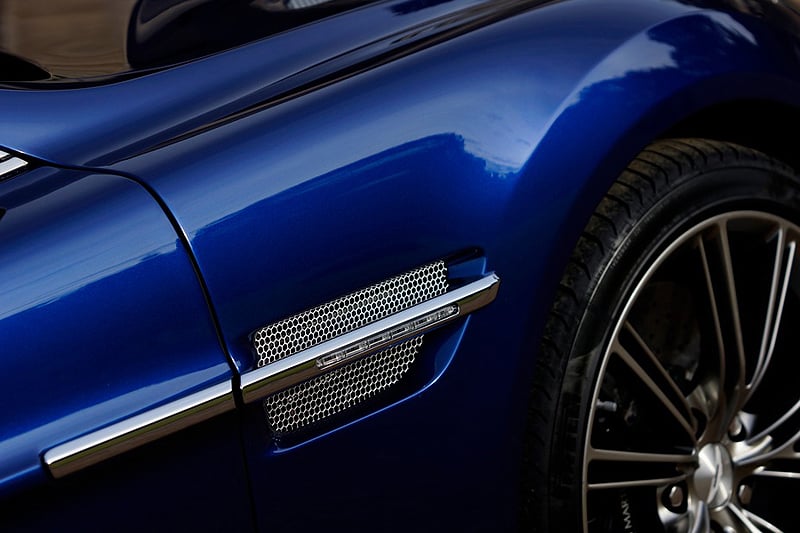
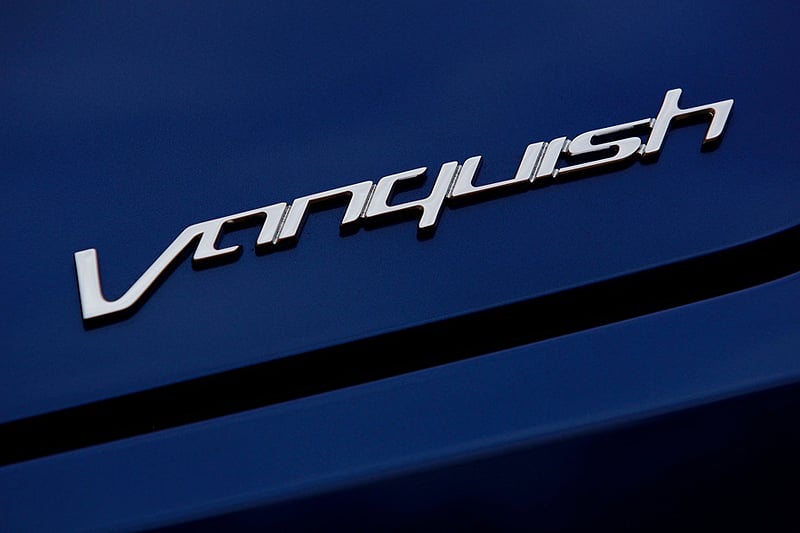
What, then, is really new about the Vanquish? It still has an extruded, welded and bonded aluminium platform, after all, and a V12 engine of 5935cc. Yes, but the platform has evolved a lot since its ancestor underpinned the first Vanquish and the first definitive version, on which all Astons have been built in various lengths, arrived with the DB9. The new Vanquish weighs about 40kg less than the DBS, yet the structure is 25 per cent stiffer.
As for the engine, it's claimed to be all new, although the similarities with the old one are obvious. It breathes better through bigger ports and valves and wider, flatter plenum chambers, and produces 573bhp against the DBS's 510, as well as 457lb ft of torque against 420. Yet CO2 output is down from 367g/km to 335, and there's much more torque on tap at lower engine speeds.
More obvious, though, is the body, which does mark quite a big step beyond the DB9/DBS/Virage/Vantage/Rapide genre. It's a slightly less exaggerated take on the One-77 look, with that car's long strake spearing from the side vent into the door, a taut, hunched stance, vertical-to-horizontal edges instead of curves, and a lower, curvier front grille. This is designed to collapse inwards under impact which, along with lowering the engine by 19mm relative to the chassis, means the Vanquish (and new DB9) can pass the latest pedestrian-protection rules without recourse to a pop-up bonnet. It's worth mentioning these things because they take up huge amounts of engineering time.
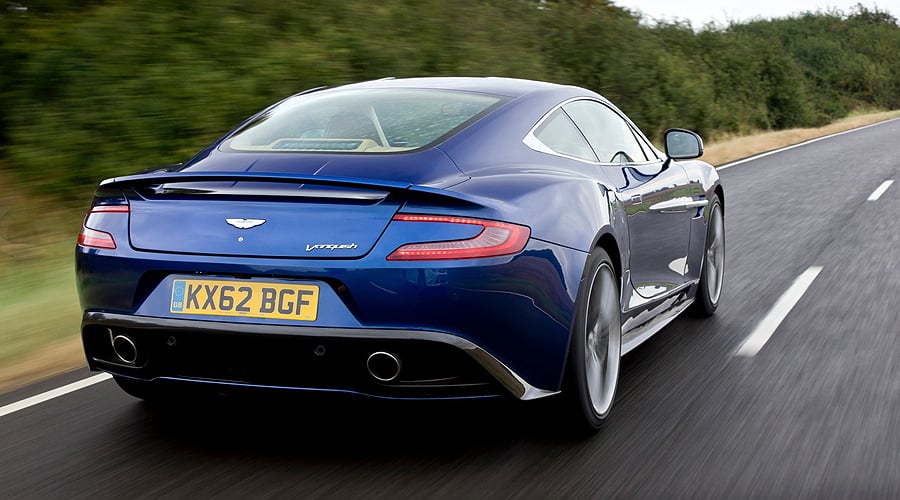
At the tail we find a spoiler flying above the main boot surface but moulded seamlessly into it, while around the body's lower edges the splitter, diffuser and lower sills parade their carbonfibre in glossy nakedness. Bumpers remain in deformable plastic.
The Vanquish looks terrific, it must be said. It promises to be Aston Martin's fiercest, most dramatic machine, at least among the larger cars, and is as fitting a mode of James Bond transport as there has ever been. You'll see it in Skyfall, about to be released, in which 007 drives a Vanquish in, yes, Skyfall Silver. Will it do that chameleon trick of disappearing into the background by matching the surrounding colours, like the last Bond Vanquish did? We'll have to wait and see.
Open the door, notice the pointlessly token nature of the two tiny back seats, remember being told that the new car's boot is much bigger than the DB9's/DBS's so the packaging isn't as disastrous as it seems, slide inside. The ambience and architecture are familiar Aston Martin, but the electric window switches – at last! – now work the right way round. More obvious is the new centre console with its iPhone-like, touch-sensitive panels in place of rows of buttons. There's a new sat-nav and information screen, too, British-designed and made, and easy to use. The sound system remains Danish, from Bang & Olufsen.
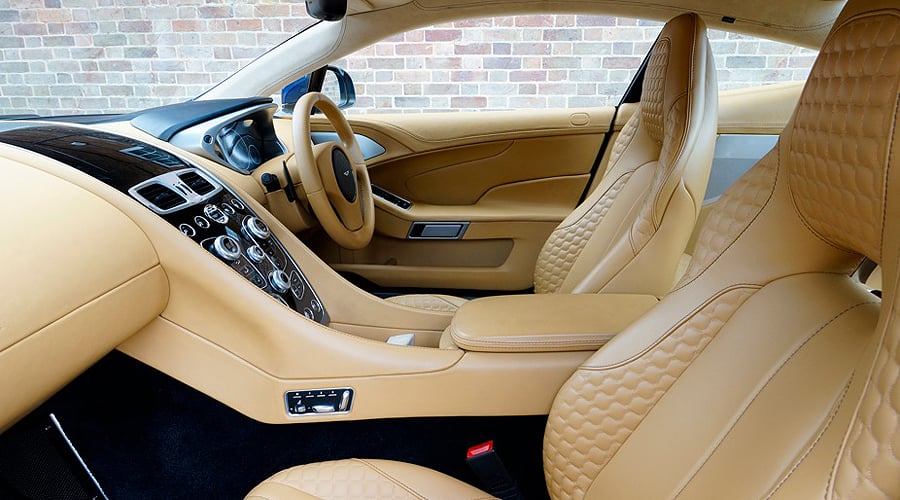
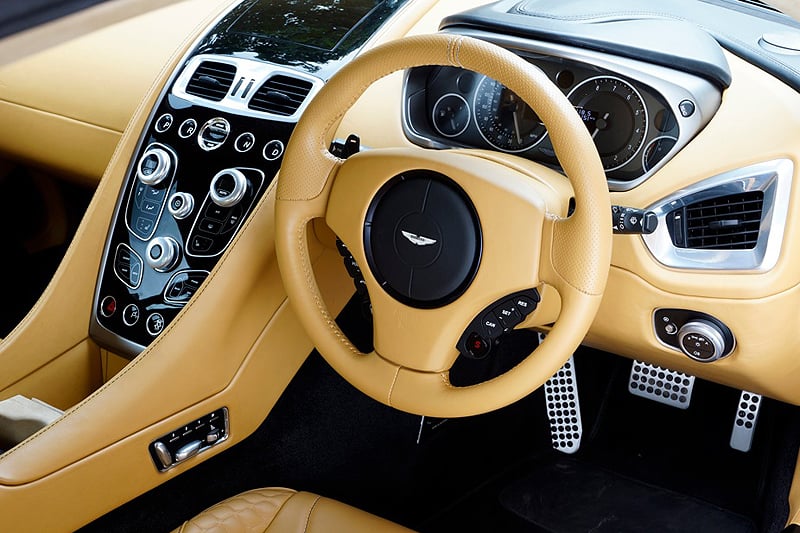
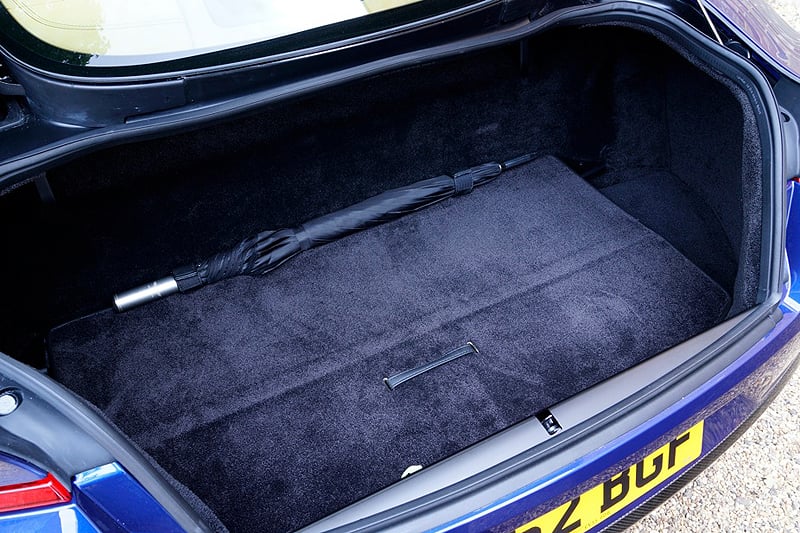
The key is still a glass cuboid, the transmission mode is still selected by glass push-buttons, but I like these Aston-unique touches. Time for the off: 'Vrrroooow,' goes the engine as I release the start-key-cum-button, a gust of aural throttle-blip authority which makes me wince given that the oil can't have circulated yet.
Right-paddle flick into first gear, or press button D for Drive? I can do either but nothing else, for the sole transmission choice is a ZF six-speed automatic. I opt for manual control. This is meant to be a supercar, after all, so I should contribute some input.
No doubt about it. This is a very rapid car, with an even surge of torque new to an Aston Martin V12 in place of the peakiness encountered before. The factory figures are 4.1 seconds to 62mph and 183mph flat-out so the Vanquish should feel as dramatic as it looks. It sounds magnificent with its explosive V12 blare, if not quite as crackly as a Ferrari. If you switch the powertain to Sport, there's more noise thanks to a partial silencer bypass, a slightly sharper throttle response, slightly more definite gearshifts with a keener kickdown in automatic mode, and the strong possibility of a headache from the boom. It's not necessary but buyers like gadgets.
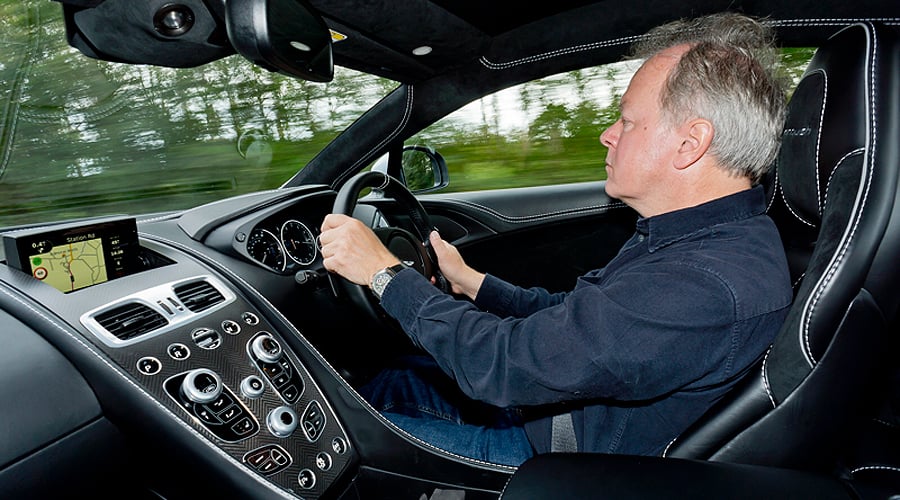
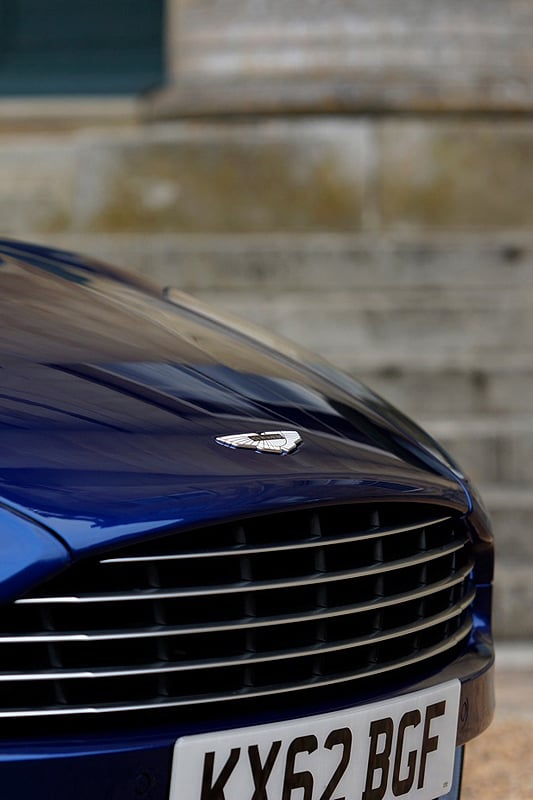
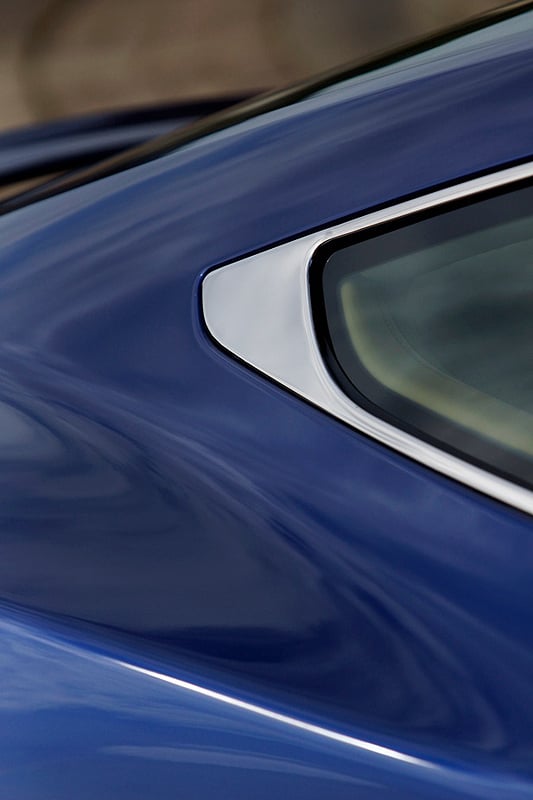
A launch-control system promises the optimum getaway: foot on brake, press button, floor throttle within a few seconds, the brakes having been held automatically. In an old-model V10 BMW M5, such treatment would cause terrible distress as the driveline crashed and the tyres screeched. In the Vanquish it barely causes a chirp from the rear wheels, so well-managed does the power flow seem to be. It's a bit of an anti-climax, actually.
Herein lies the Vanquish's possible problem. It's almost too well-mannered: the gear shifts are always smooth regardless of driver input, the torque delivery is so even that progress feels less accelerative than it really is. This is fine for a grand tourer, but that should be the DB9's job and the Vanquish should be more raw when the driver craves a closer involvement.
It does take corners beautifully, though, with quick, accurate steering which feels more natural than that of the last Aston I drove, a sport-suspension V8 Vantage with a rotten ride and a wooden-feeling helm. The Vanquish is innately more supple, but it doesn't cope well with rapid undulations such as those on the fenland roads of our test drive. Switching the adaptive dampers to Sport (a switch separate from the eponymous engine/gearbox alteration) tightens the big movements but brings on a choppiness, while Sport Track unsurprisingly rattles your teeth. None is quite right, but through it all the Vanquish shows terrific traction and a lovely balance. The front end always grips hard and the tail is enjoyably tweakable on the accelerator. Great brakes, too.
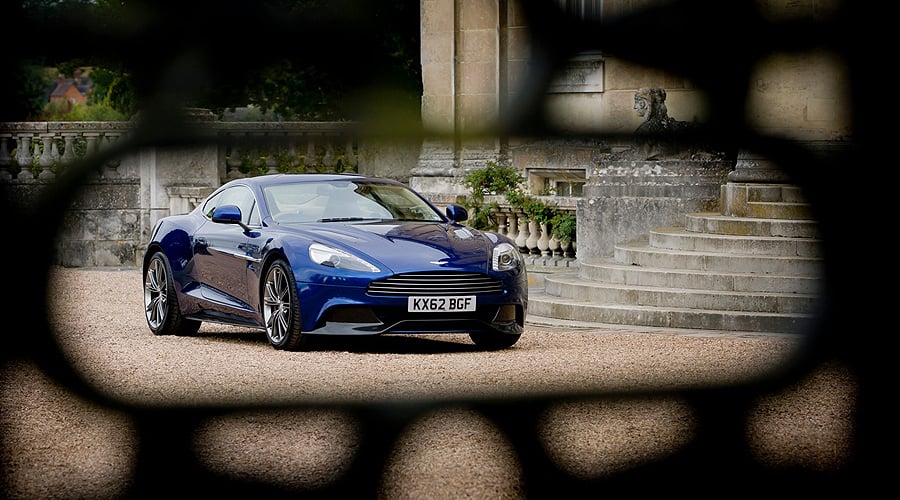
Yes, the Vanquish is a very fine car in many ways, but somehow it's just a bit more clinical than it should be. If it has to be an automatic, it should have the option of quicker, more definite gearshifts as a double-clutch transmission would provide. It should have the tactile drama to go with the whizzy looks and aural showboating, be more real and less in thrall to electronic control. Shaken it can do, on a ripply road. I'd like to be more stirred.
I'm pleased to report that Dr Bez appeared later in the event, however, alive and well. He explained that progress is a good thing but that round wheels are better than square ones. At least, I think that's what he said.
Photos: Aston Martin













